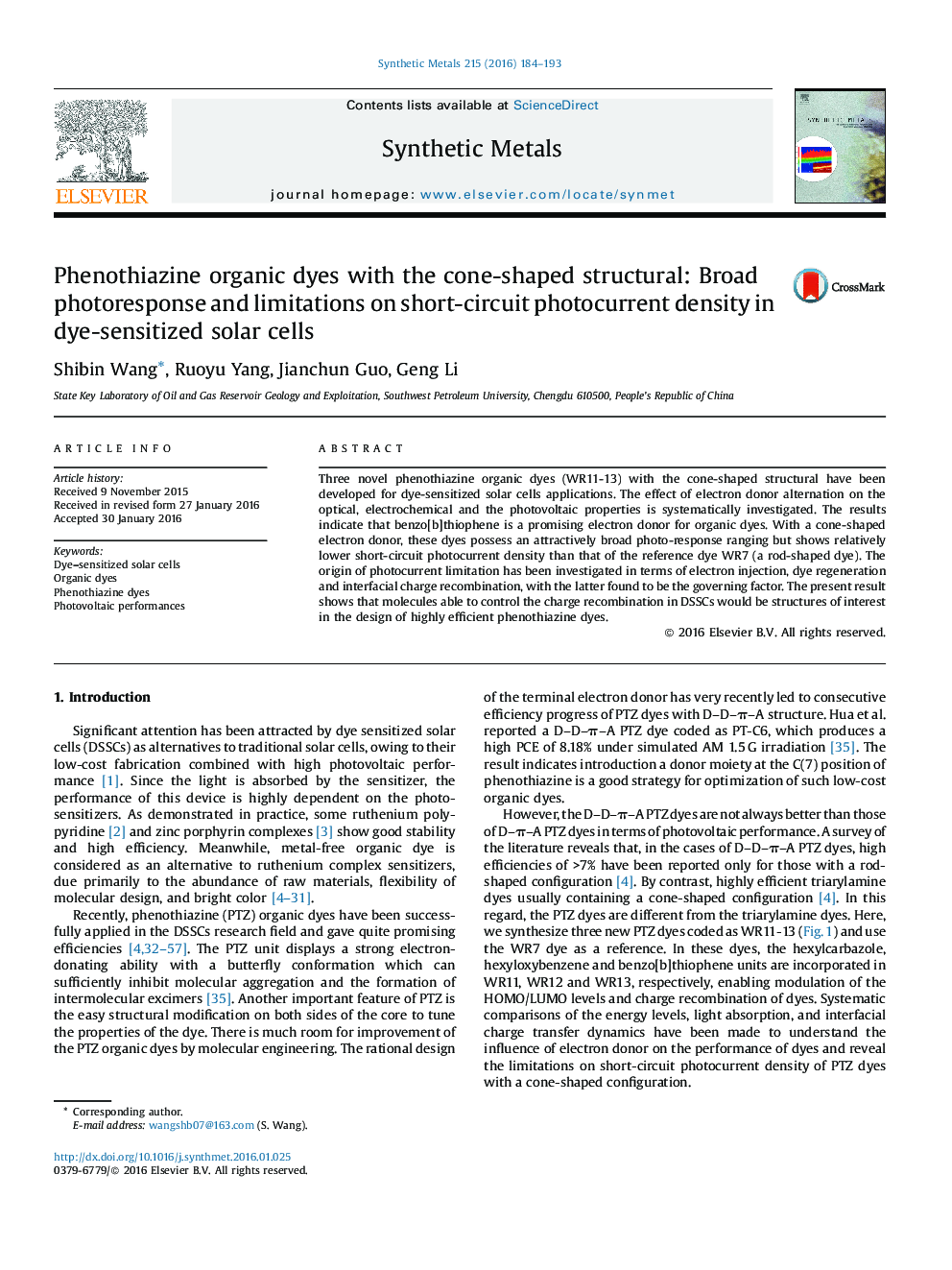| Article ID | Journal | Published Year | Pages | File Type |
|---|---|---|---|---|
| 1440267 | Synthetic Metals | 2016 | 10 Pages |
•Three new D–D–π–A phenothiazine dyes were synthesized for DSSCs.•The effects of terminal electron donor are apparent.•The origin of JSC limitation was investigated.•Performance of PTZ dyes based DSSCs is dominated by charge recombination.
Three novel phenothiazine organic dyes (WR11-13) with the cone-shaped structural have been developed for dye-sensitized solar cells applications. The effect of electron donor alternation on the optical, electrochemical and the photovoltaic properties is systematically investigated. The results indicate that benzo[b]thiophene is a promising electron donor for organic dyes. With a cone-shaped electron donor, these dyes possess an attractively broad photo-response ranging but shows relatively lower short-circuit photocurrent density than that of the reference dye WR7 (a rod-shaped dye). The origin of photocurrent limitation has been investigated in terms of electron injection, dye regeneration and interfacial charge recombination, with the latter found to be the governing factor. The present result shows that molecules able to control the charge recombination in DSSCs would be structures of interest in the design of highly efficient phenothiazine dyes.
Graphical abstractFigure optionsDownload full-size imageDownload as PowerPoint slide
